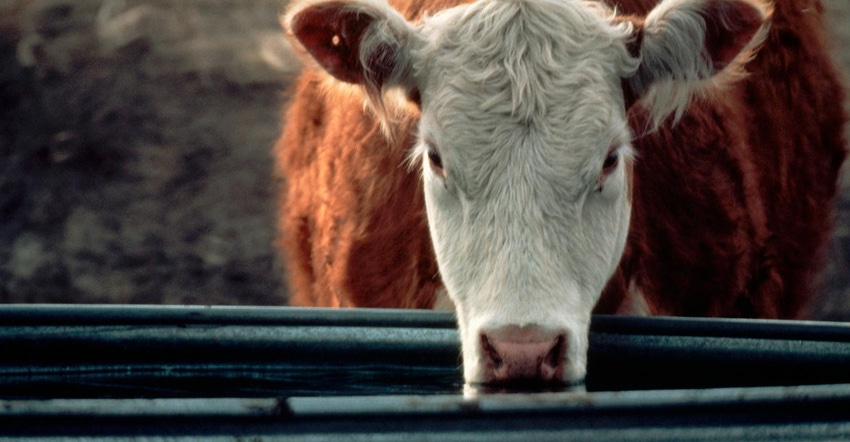June 28, 2022

Providing access to water can be challenging especially for operations enduring drought conditions. Water related toxicities and fatalities may be seen with greater frequency under hot and dry time periods. Warnings of toxicity often develop rapidly, and animal death may be the first clinical sign. Common water related toxicities include water deprivation, sulfates, blue-green algae, and nitrates.
Water Deprivation
The common history of water deprivation is an automatic water stops functioning or the pump at the well quits working unbeknownst to the rancher. With good intentions, the cattle are given immediate and full access to water. Unfortunately, this approach often leads to rapid imbalances in electrolytes and salt toxicosis. It is important to note that salt toxicosis in this instance is not the over consumption of salt.
Animals that have been without water have elevated sodium levels in their tissues, including the brain. When animals are given free or rapid access to water, the fluid rushes to the high levels of sodium and essentially floods the brain. Cattle rapidly show neurologic signs including incoordination, weakness, seizures, and death.
If animals have been deprived, rewatering should be done gradually over time. Just a few inches of water should be placed in a tank or trough. Depending on the conditions rewatering may need to be done over a period of several hours. Consultation with a veterinarian is the best approach.
Sulfates
Cattle experiencing sulfur toxicity also show neurological signs. Commonly we would call this condition polioencephalomalacia or polio. Cattle initially become depressed, decrease feed intake, and exhibit lethargy. As the condition progresses, they become ataxic, stagger, and may die.
It is advisable to test water sources for sulfate levels and retesting may need to be done over time as levels can change. Additionally, sulfate levels are additive so both feed and water should be assessed to determine acceptable levels.
Blue-Green Algae
The classic history of blue-green algae (BGA), also known as cyanobacteria, is several dead animals surrounding a pond. Not all species of cyanobacteria are toxic. There are three main types seen in Oklahoma and they produce a toxin that leads to neurologic signs and rapid death usually within a few hours. Liver damage which may be noticed as photosensitivity or bloody diarrhea can also be seen.
In these cases, water should always be tested for a BGA bloom. Fertilizer and manure runoff can increase chances of BGA. Ponds should be monitored closely for signs of bloom and dead wildlife. If BGA is suspected, all remaining animals in that pasture should be moved to a location with a different water source.
Nitrates
Nitrate toxicity is often part of the discussion when evaluating forages especially Johnson grass. However, a common history for nitrate toxicity includes hauling of water in containers previously used for fertilizer. Due to the concentration of fertilizers or other chemicals, it is nearly impossible to remove residue to a safe level. Nitrates may also reach dangerous levels in ponds or other water sources that collect drainage from manure, highly fertilized fields, or industrial waste.
Neurologic signs and death are also seen with nitrates as have been previously described with other toxicities. The blood in nitrate toxicity is chocolate brown though. Just as with sulfates, the effects of nitrate levels of forage, feed and water are additive. So, both feed and water must be considered when evaluating a nitrate problem.
Deep wells are usually safe sources of water. No safety standards have been set for livestock water, but it has been suggested that up to 100 ppm of nitrate nitrogen in water should be safe if cattle are consuming an adequate ration that is free of nitrates. This is ten times the safe level set for humans.
Oklahoma State University has laboratories that can assist producers in testing.
Source: Oklahoma State University, which is solely responsible for the information provided and is wholly owned by the source. Informa Business Media and all its subsidiaries are not responsible for any of the content contained in this information asset.
You May Also Like




